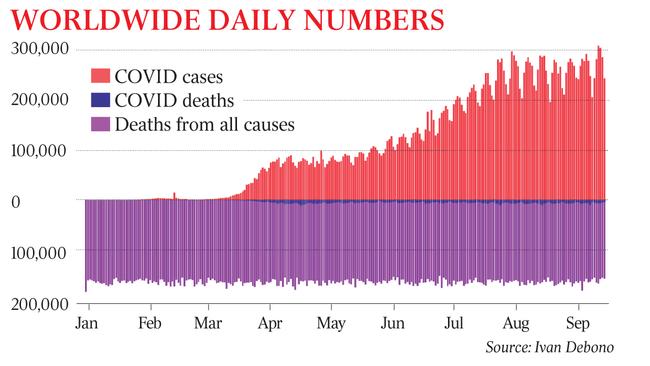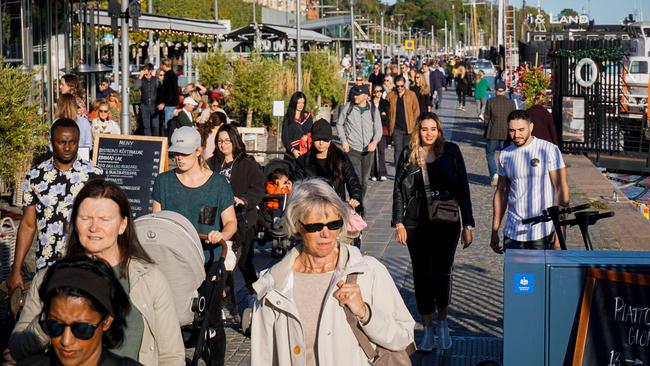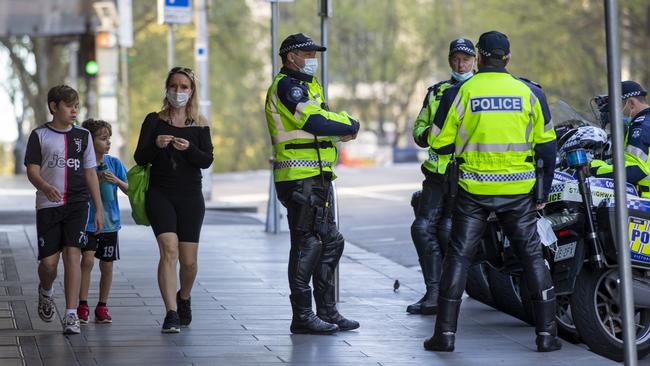We shut up shop for a coronavirus that was unlikely to kill us
Remember when lockdown was about ‘flattening the curve’? That became ‘suppression’ and now, in Victoria, it’s ‘elimination’. Why?

John Kenneth Galbraith’s quip couldn’t be more apt right now, where the world’s political class and their cheer squads in the media and pockets of academia are trying to justify the extraordinary attack on civil liberties and economic freedom over a disease that’s like a severe flu in its health impact. They will need more than: “China said it worked”, “it was popular”, and “it feels as if lockdowns must work”.
The aim of such blunt policies, enacted contrary to advice and without empirical support, has steadily shifted from “flattening the curve”, to suppression, and now, in Victoria, at least, “elimination”.
Regardless, we shouldn’t have copied the policies of an increasingly totalitarian state on faith; many terrible and stupid things are popular, and science doesn’t care about feelings.
In Sweden — a nation castigated mercilessly for taking sensible precautions rather than enforcing a China-style police state — total mortality has turned out to be much the same as previous years.

It’s had no “second wave”, unlike other lockdown-prone European nations, lending support to the idea Swedes have developed some herd immunity, and are getting on with their lives.
The modelling produced to justify Victoria’s stage-four lockdown that began on August 1, predicted the 14-day average of new cases would be “over 60 by mid-September” with a tough lockdown. It was 34 as of Monday, when 11 new cases were announced — the modelling was poor.
As analysts at Bell Potter showed, the virus peaked just three days after the fourth stage began, which, given the incubation period, means the additional measures had nothing to do with the decline.
Almost 1770 Belgian doctors and health professionals issued an open letter urging Belgium — in a second wave of about 1000 cases a day — against reimposing a lockdown. “If we compare the waves of infection in countries with strict lockdown policies to countries that did not impose lockdowns (Sweden, Iceland …), we see similar curves. There is no link,” they said on September 10.

Never mind all that. Just as our medieval ancestors thought influenza was caused by the “influence” of the stars (hence the name), the decline in cases in Victoria will be attributed to curfews, lockdowns, and Victorians’ globally unique vigilance.
There is no link between lockdowns and reduction in deaths, let alone a demonstration of causality, as multiple analyses in medical journal The Lancet and elsewhere have shown. The sun doesn’t rise in the morning because the rooster crows.
Paris-based data scientist Ivan Debono published an insightful graph last week, putting the 960,000 global deaths from or with COVID-19, in context. You almost need a microscope to see the impact, given more than 60 million people, mostly aged, die each year.
And Melbourne University’s vice-chancellor implied this week, in terms of quality-adjusted life years saved, the toll would be much less. “What is the value of a 90-year-old’s life versus the value of the continuing livelihood and happiness of a 25-year-old?’’ he bravely asked.

The chart, anyway, is either a demonstration of our collective genius in snuffing out a very deadly virus — for the first time in history — or one of the coronavirus’s modest lethality. I am pretty sure for which explanation future historians will opt.
Ultimately the tide of sanctimony and hysteria will go out leaving the facts, but in the meantime the economic and social destruction continues.
The facts have changed but not the response. Why?
Economics provides two ideas that help us understand how we ended up putting millions under house arrest: path dependency and public choice theory.
If the virus had emerged in Sweden, Brazil, Japan or even Victoria, it is unlikely the world would have locked itself down in terror. History matters; China took the lead, we followed.
The path you’re on depends how you started, however stupid it was in hindsight. For reasons of saving face and sheer inertia, governments cannot and do not re-optimise like computers might with the latest information each day, which leads to the second factor. Economists once thought politicians acted wholly in the public interest, their models assumed policies were carried out as if by a “benevolent dictator”.
Today we have:
— Dan Andrews (@DanielAndrewsMP) September 11, 2020
1,336 total active cases, down from over 7,880 in mid-August.
74 active cases in regional areas, down from 518.
Everything you're doing is working, Victoria.
We just have to stay the course.
Nobel prize winner James Buchanan blew this naivety away in the 1970s, showing that bureaucracy and regulators often acted in their own interest or that of the industry they regulated (as the GFC well-illustrated).
“Show me the incentives, and I’ll show you the outcome” quipped legendary investor Charlie Munger.
The pandemic has given the political class an opportunity to increase its fame, power and relative income under the self-righteous banner of “saving lives”.
Politicians, who know they’ll be accountable to the media only for pandemic deaths, do whatever is popular, such as close state borders, in order to be re-elected.
All the costs have fallen on others, who had no place at the decision-making table.
Imagine one slight tweak to this incentive structure whereby every politician and chief medical officer endured a 20 per cent pay cut for every day lockdown and restrictions were maintained. How long would it have lasted?




“Faced with the choice between changing one’s mind and proving that there is no need to do so, almost everybody gets busy on the proof.”